Post-sales Email Best Practices: Retain Customers and Increase Sales
-
Vladimir Kosygin
Copywriter Elbuz
In this fast-paced era, customer retention requires much more than just a great purchase. Let's imagine a scenario: a customer has just completed a purchase and is immersed in the world of your brand. What's next? A helpful and warm post-sales letter is a key step in connecting you and your client to a new level of trust and understanding. Each of the steps that will be discussed later in the article will help you not just sell, but also create strong and long-term relationships with clients. These simple but effective strategies are based on experience and knowledge. It's important to remember that every email is an opportunity to support your customer, show you care, and build a relationship that will lead to repeat sales and strong loyalty.
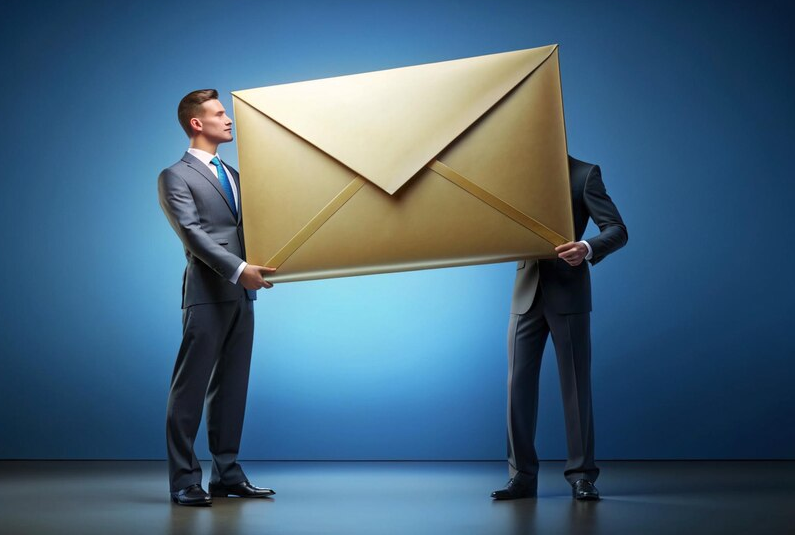
Glossary
- 📧 Email series: A set of automatic emails sent to the client after making a purchase for increasing loyalty and improving customer experience.
- 🛍️ Post-sales email series: Emails sent to a customer after a purchase to inform, thank, and motivate repeat purchases .
- 🙏 Thank You Letters: Letters thanking you for a purchase, often including bonuses or discounts on your next purchase.
- 🔔 Reminders and Announcements: Emails reminding customers about products, services, or upcoming events.
- 🌟 Motivational messages: Emails containing motivating content that encourages the client to take further action, such as repurchase or registration for the event.
- ⭐ Request for Review: Emails that ask a customer to leave a review or recommendation about a product or service.
- 📄 Transactional emails: Alerts about the current order status, including order confirmation, shipping and delivery notifications.
- 📰 Informational Messages: Letters informing customers about new products, services, or company updates.
- 📝 Email Customization: The process of tailoring and personalizing email campaigns to achieve the best results and increase customer engagement.
Optimizing post-sales email series for maximum customer retention
How I put post-sales email series into practice
I've worked with various companies helping them improve their email marketing strategy, and I can confidently say - post-sales emails -letters play a key role in retaining customers and increasing repeat sales. For example, one of my partner companies was faced with the problem of low customer loyalty after the first purchase. We solved this problem with the help of a smart series of post-sales emails, which allowed us to increase our customer retention rate by 15%.

Structure of a standard post-sales email outline
So how did I put this into practice? The first step was to create a trigger chain of emails that are sent to subscribers after the deal is concluded. Here are the main elements of the standard scheme:
- ✅ Order confirmation
- Description: This letter contained information about the purchased goods, payment and delivery details, as well as support contacts.
- Benefit: A letter provides the client with complete information, reducing anxiety and creating a feeling of reliability.
🎉 Thanks for purchase
- Description: Then we sent a letter thanking you for the purchase and introducing client with our social networks and blog.
- Benefit: This letter reinforced the client's sense of value and gratitude.
🎁 Discount or bonus on next order
- Description: We offered a discount or bonus for the next order, invitation to the loyalty program.
- Benefit: Motivates the customer to repurchase and creates a positive experience with the brand.
📝 Review and feedback
- Description: Finally, we invited the client to leave a review of the purchases and the work of the store.
- Benefit: It helps to understand the needs of the audience and improve service.
.png)
Tips for Writing Effective Post-Sales Emails
- I recommend personalize Each email, address the customer by name and mention the items purchased. This creates a feeling of personal attention.
- Use visual elements and quality images. Current and beautiful product photos can inspire repeat purchases.
- 📊 Analyze the results. Regularly check email open rates and link click rates. This will help you understand which emails perform best.
- I believe that including calls to action in every email increases engagement. Encourage customers to visit your site, share their reviews, or invite them to a loyalty program.
My work with real examples
As an example, one of the strategies I used , included sending an email with a discount coupon a week after order confirmation. This email showed a high conversion rate: 20% of customers returned for a repeat purchase. I believe triggers like these create long-term loyalty and ensure consistent income.
Tip: Test different scripts and emails to find the ones that work best for your audience . Adapt your strategy based on data and customer feedback.
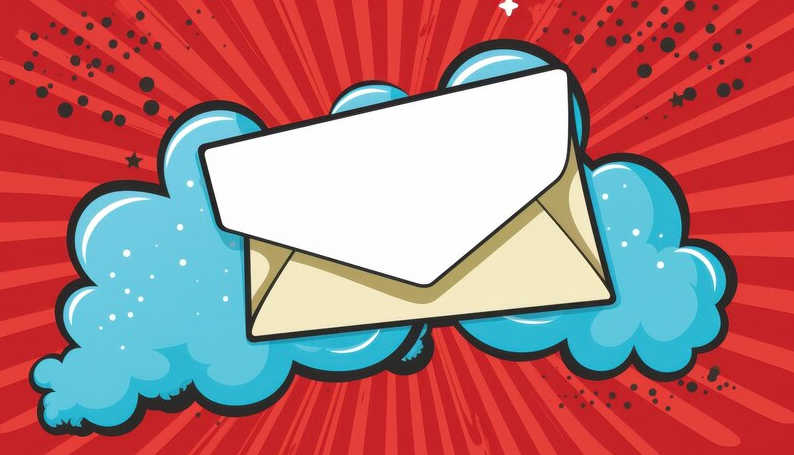
Best practices and mistakes to avoid
| Best practices | Mistakes to Avoid |
|---|---|
| Email personalization | Sending identical emails to all clients |
| Using quality images | Neglecting visual content |
| Analysis and customization of campaigns | Ignoring analytics and feedback |
| Calls to action in every email | Lack of clear calls to action |
I encourage you to take a close look at your current campaigns and consider how they can be improved using the practices described above. I believe that with the right post-sales email strategy, you can significantly increase your customer loyalty and repeat purchases.
If you are interested in more detailed information on creating an email newsletter, I advise you to read this article.
How to collect reviews and turn them into social proof: my example
When I first started integrating post-sales emails into my strategy, one of the key goals was to collect customer feedback and use it as social proof. This method not only helps build brand trust, but also increases repeat sales and LTV.
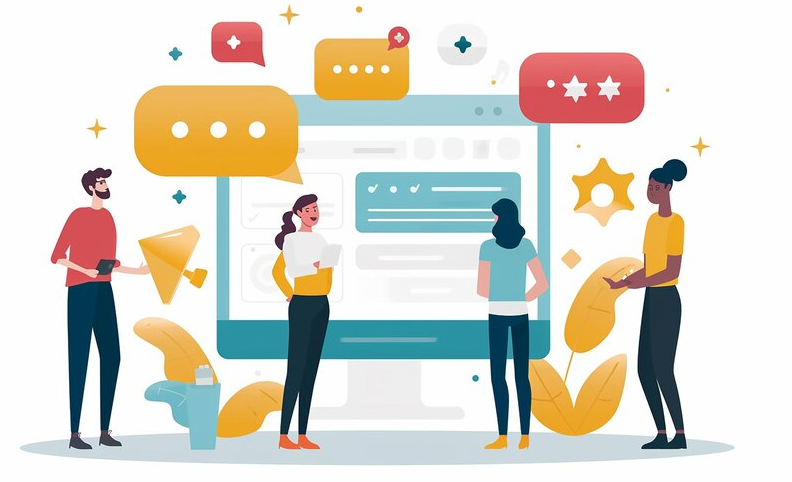
My approach to collecting feedback
Immediately after the purchase, I sent customers a letter thanking me and inviting them to leave a review. At this stage I discovered that the tone of the letter was important: it should be informal and friendly. I always tried to emphasize how important their feedback was to me and how it would help improve my service.
Tips for writing feedback letters:
🔥 Use a personal appeal at the beginning of the letter.
🔥 Explain how their feedback will help you serve your customers better.
🔥 Include a convenient link to leave a review.
How I turned reviews into social proof
Once I received the reviews, I analyzed them and highlighted the most positive and valuable comments. I especially focused on those reviews where customers noted features of the product that competitors did not have. I posted these reviews on the website in the “Customer Reviews” section with the permission of the authors.
It's not enough to just collect reviews - it's important to show them to potential clients and make them part of your marketing strategy. I recommend placing reviews on the main page of the site, in the product description, and even in email newsletters, so that a new buyer can see the real experiences of other customers.
Examples of using social proof:
👉 Posted reviews on the main page of the site.
👉 Added quotes from reviews to future newsletters.
👉 Integrated reviews into advertising campaigns on social networks.
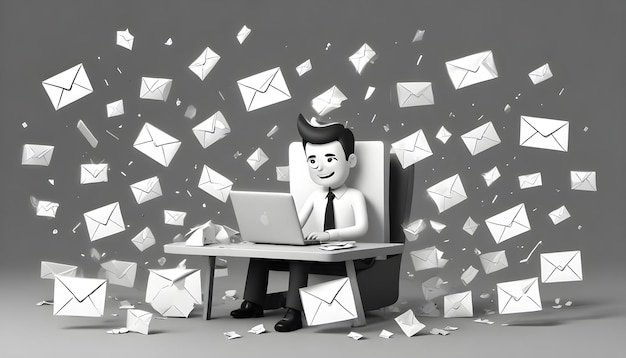
Practical advice and examples from my practice
Regularly sending emails asking for feedback: I always pay attention to the timeliness of such emails. It is best to send a request a couple of days after delivery of the goods, when the client has already evaluated the purchase.
Integration with review platforms: To simplify the process for clients, I integrated the review system with platforms like Trustpilot and Google Reviews. This increased the likelihood of receiving reviews since the client did not have to go through complex procedures.
Review reward: From time to time I offered clients small discounts or bonuses for leaving a review. This motivates consumers to share their experiences and significantly increases the number of reviews.
Do's and Don'ts
| Helpful | Don't |
|---|---|
| 🟢 Ask customers for feedback politely and personally | 🔴 Sending too many requests for reviews |
| 🟢 Posting real reviews on | 🔴 Ignore negative reviews |
| 🟢 Integrate reviews into marketing | 🔴 Falsify reviews |
| 🟢 Reward customers with bonuses for reviews | 🔴 Make it difficult to leave a review |
I I am convinced that properly collected and presented reviews can be a powerful tool for increasing brand trust and repeat sales. I hope my tips and examples will help you in this process.
Post-sales email series: main types and examples of effectiveness
💌 Thank You Letters
When a customer completes a purchase, I think it's important to immediately thank them for it. In my practice, I always use genuine thank you letters instead of standard templates. For example, I design them in the corporate style of, adding light pastels and bright accents to make the letter look attractive.

🍀 Key elements in a thank you note:
- 📦 Order number, composition, cost and status
- 🚚 Delivery information and approximate timing
- 🔍 Parcel tracking tips
- 📞 Customer support contact details
I am convinced that such letters are opened by up to 99% of users, which makes it possible to verify the successful completion of the order. Standard transactional messages are fine, of course, but my clients especially valued personalization and individuality.
📝 Motivating messages
In order to encourage the client to make repeat purchases, I actively used motivating messages. These letters offered various lucrative offers that could further reduce the client's costs.
📊 Offer options I used:
- 💰 Discounts on your next purchase
- 🎁 Gifts when placing an order for a certain amount
- 🆓 Free shipping
- 💳 Bonuses or cashback
- 🎟️ Promo codes for specific products
- ✅ Exclusive access to limited collections
I advise you to add offers that motivate the client to place their next order as quickly as possible. For example, a discount, the size of which depends on the time of placing the next order, worked very well for me.
🌟 Request for feedback or recommendation
Emails asking for feedback or rating are equally important. I believe that such letters should be sent a few days after receiving the order. In exchange for a pleasant bonus, customers most often left reviews about the product, rated the quality of service and shared their impressions with friends and relatives.

📬 Components of Successful Review Letters:
- 💌 A motivating headline and preheader that answers the question of what a subscriber needs and what goodies he can get
- 🙋 ♂️ Personal message: a letter from a specific company employee with a signature and photo
- 🛒 Purchase reminder: a list of purchased goods and a link to publish a review
- 🎁 Reward for leaving a review: bonus points, discounts, gifts, promo codes
📋 Transactional emails
These types of messages play a key role in post-sales series. They help keep the buyer informed and make the transaction transparent. It was important for me to provide the client with all the necessary information at every stage of the transaction.
📬 Examples of transactional emails:
- 💌 Payment method confirmation
- 📦 Order confirmation with information and delivery times
- 🚚 Parcel dispatch notification
- 🎁 Message about accrual of bonuses
- 📍 Notification about delivery of goods to the point of issue
I note that new buyers especially appreciated detailed and clear explanations for each stage of the purchase. It is important to spice up these letters with emoticons, pictures and gifs to create a special mood.
Newsletters
Newsletters can greatly increase customer loyalty. I have always believed that regardless of the product, useful additional information will be welcome. Practical recommendations for using and caring for the product worked great in my practice.
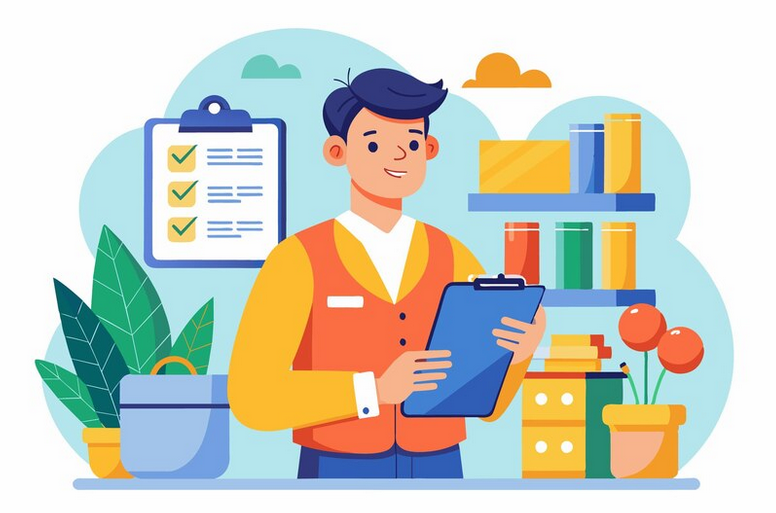
📚 Topic ideas for newsletters:
- 🚞 What clothes to take on a trip
- 🧥 How to wash a winter jacket
- 👗 Examples of combinations of models
- 🏡 Interior design tips
- 📚 Series of tutorials and much more
Based on reviews and requests to support, I selected topics that would be most relevant to clients. This helped me create valuable emails that would make choosing and using a product much easier.
⏰ Reminders and announcements
To maintain interest in the brand, I sent out reminders and announcements. These letters could inform about the replenishment of inventory, the arrival of goods from the wish list at the warehouse, and the appearance of special offers on previously viewed products.
🎉 Reminder examples:
- 📦 Consumables replenishment
- 🧴 Notification about new arrivals of care products
- 🔋 Reminder about useful accessories
- 💥 Announcement of special offers
I often used creative solutions for such letters. For example, the announcement of a new collection of suitcases in the form of a game of tic-tac-toe received a lot of positive feedback from customers. I recommend using vibrant photography, wordplay, and creative message formats.

💼 Example:
| Components | Recommendations |
|---|---|
| Thank You Letters | Personalized, colorful |
| Motivating messages | Great offers, promo codes |
| Feedback and reviews | Personalization, rewards |
| Transactional emails | Informative, optimistic |
| Information messages | Practical advice, answers to questions |
| Reminders and announcements | Creative, relevant offers |
In the future, I plan to continue improving my email campaigns based on feedback and analytics to deliver deliver maximum value to clients and implement best practices in email marketing.
Recommendations for setting up automatic mailing for post-sales emails
When I started using post-sales emails in my practice, I quickly realized how important it is to set up automatic mailings correctly. This not only saves time, but also significantly increases customer loyalty and repeat sales.

Procedure for setting up automatic email distribution
To create a successful series of post-sales emails, start by choosing the right service. I have used SendPulse and GetResponse and I can say that their functionality fully satisfies the need for creating complex automated scripts. So, here are the basic steps:
- Creating an automatic mailing
- Specify the name of your campaign, sender, time and days of sending letters. I always choose a time when clients are most likely to check their email, this increases the open rate of emails.
- Set up a trigger to start a series of emails. In our case, this is the moment of purchase.
Email personalization
- Create letters yourself or use templates. I prefer to write the texts myself so that they are unique and reflect the style of our brand. Here's the example I used:
- The first email contains a thank you for your purchase and order details.
- The second email offers a discount on your next order.
- Third - a request for feedback.
- The fourth letter is a bonus for those who left a review. These could be unique promotional codes or small gifts.
- Create letters yourself or use templates. I prefer to write the texts myself so that they are unique and reflect the style of our brand. Here's the example I used:
Setting up message sequencing
- To monitor the correctness and consistency of sending, I use analytical tools and functions tracking in the service. This way you can see which emails work best and make changes if necessary.

Personal Example and Instructions
I remember one of my clients once sent a thank you email and shared that it was the personalized post-sales email that motivated him to repurchase. I always emphasize the importance of:
- 🚀 Customer base segmentation: dividing the base into segments allows send more targeted and personalized emails.
- 📧 Personalizations: Use the customer's name and information about their previous purchases.
- 📆 Regularity: set a convenient frequency to not only maintain interest, but also not overload the client with letters.
I believe that properly setting up post-sales emails can significantly increase your revenue and increase customer loyalty. You not only remind of yourself, but also show care and interest in each client.
Table of practical recommendations
| Recommendation | Advantages | Disadvantages |
|---|---|---|
| Customer base segmentation | 🎯 Increases email focus | Takes time to set up and maintain |
| Email personalization | 💬 Increases open rates and customer trust | May require additional resources for data integration and analysis |
| Clear ordering | 🔄 Ensures a smooth and logical progression of the campaign | Incorrect configuration may result in late delivery or lack of expected effect |
| Analysis and adjustment of strategy | 📈 Allows you to optimize mailing efficiency based on data and customer experience | Analytics can take a lot of time and requires careful monitoring |

I sincerely hope that my tips will help you set up successful automated post-sales email campaigns that will not only retain your customers, but also increase the likelihood of repeat purchases.
Choose the right email types and test different variations
📝 I believe that one of the key factors for successful post-sales email campaigns is the correct choice of email types. There are many options available, and I always recommend carefully selecting the ones that best suit your business niche and product type. Let me give you a few examples based on my personal experience.
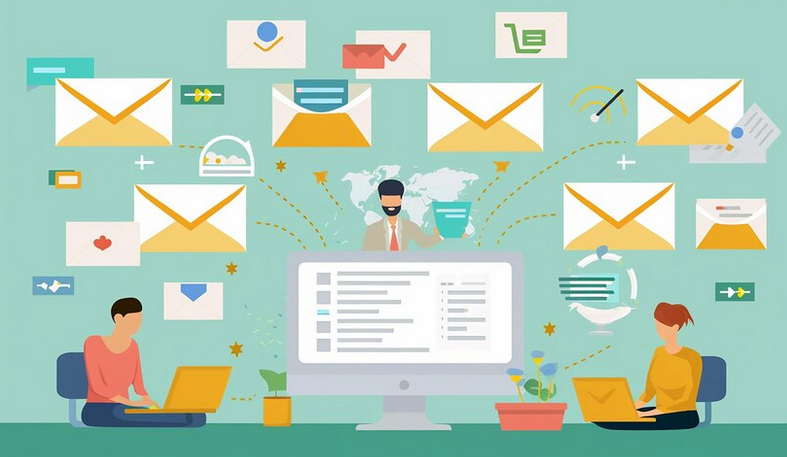
1. Letters of gratitude
A thank you note is a simple but effective way to show your customer that their purchase is important to you. I believe that gratitude creates a positive impression and strengthens the relationship with the client.
Example: When I was working on an email campaign for a sportswear brand, we added a simple thank you note to the series of messages. This has significantly increased customer satisfaction and reduced the number of returns.
2. Suggestions for additional products
Letters of recommendation with suggestions for additional products (cross -sell) can significantly increase the average check. I would recommend using shopping analytics to create personalized recommendations.
Example: In another campaign for an online electronics store, we used add-on offers to shopping. This resulted in a 15% increase in sales in the first three months.
3. Restocking Reminder Emails
Some products require periodic renewal and Reminder emails are very useful for encouraging repeat purchases.
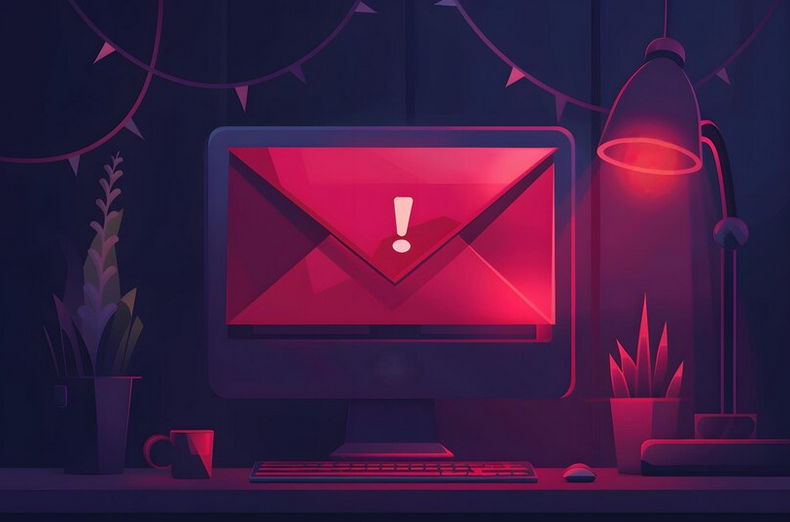
Tip: I recommend setting up an automation to send similar emails at a certain time after purchase.
4. Discounts and promotions
Letters with discounts and special offers for the next purchases always attract attention. I believe this is a great way to increase loyalty and encourage repeat purchases.
Example: We have introduced a 10% discount for customers who left a review about the purchase. This method doubled the number of reviews and increased trust in the brand.
Tips for testing and improving emails
📊 I would advise you to always test different formats emails to find the best option for your audience. Here are some tips I've used:
- 📤 A/B testing: Divide group your audience and send them different versions of your emails to see which ones work best.
- 🕵️♂️ Metric analysis: Regularly review your open rates, clicks, and conversions to adjust your strategy.
- 🚀 Process automation: Use automated systems to send emails at the right time, this allows you to optimize your work and increase the effectiveness of your campaigns .
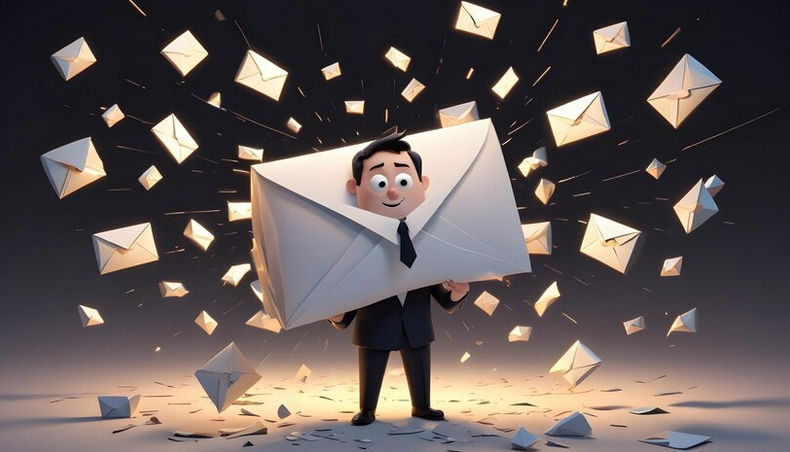
Best Practices Table
| Useful steps | Not recommended |
|---|---|
| Thank You Letters | Ignore customer reviews |
| Additional product offers | Send too many emails |
| Reminder emails | Use template messages |
| Discounts and promotions | Neglect Personalization |
I'm a big believer in choosing and testing different types emails will help you create effective post-sales email campaigns that will increase customer loyalty and ensure repeat sales.
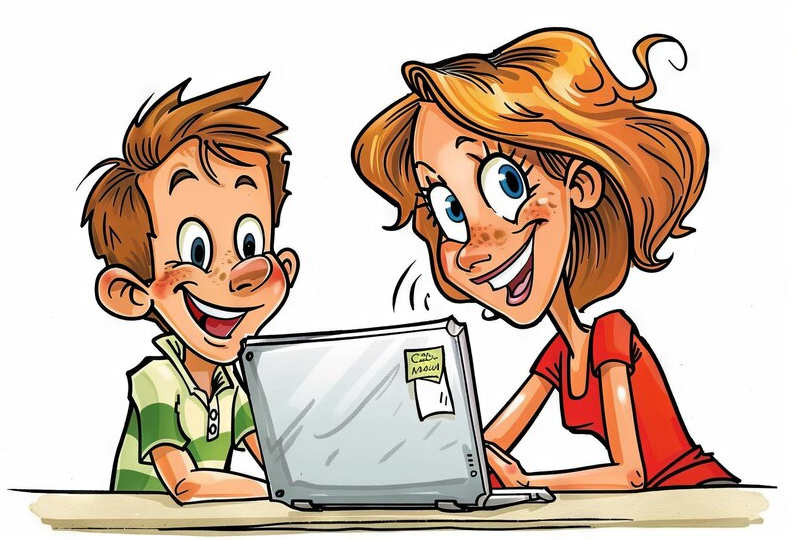
Experience Eobuwie
Eobuwie is a leading online store for shoes and accessories in Europe. The company offers hundreds of well-known brands and thousands of shoe models, meeting the diverse needs of its wide audience. Eobuwie's core business is online sales, which requires effective customer retention strategies to ensure continued growth and stability.

Main goals and objectives
- 📈 Customer retention after first purchase
- 🛒 Increase in repeat sales
- 🌟 Increase customer loyalty
- 📩 Increasing email open rates and readability
Main problem
Many customers make one purchase and never return, resulting in lost repeat sales potential. It is necessary to create an effective post-sale email series that will ensure that customers return to the site and encourage them to make new purchases.
Characteristics and interests of the target audience
- 💼 Age: 25–45 years old
- 👠 Interests: fashion, shoes, online shopping
- 🖥️ Active users of the Internet and social networks
- 📊 Passion for quality and famous brands
- 💬 Sensitivity to discounts and exclusive offers

Why is this important to customers?
- 💬 Building loyalty: After a purchase, customers want to know that they are valued and they are taken care of.
- 🛒 Motivate repeat purchases: By providing exclusive offers and personalized content, Eobuwie can encourage customers to order again.
- 🌟 Brand Extension: A positive post-purchase experience can lead to recommendations among friends and on social media.
Key results of the project
Eobuwie implemented a comprehensive post-sales email series, including the following types of messages:
| Type of letters | Description | Results |
|---|---|---|
| Thank You Letters | Expressing gratitude for the purchase and the first steps in forming a trusting relationship | 🔄 Increase in email open rates by 35 % |
| Motivational messages | Exclusive offers and discounts for repeat purchases | 💵 25% increase in repeat sales |
| Request for feedback or recommendations | Collecting feedback and reputation management | ⭐️ Increase in reviews on the site by 20% |
| Transactional emails | Order confirmations and delivery statuses | 📬 Open rate about 70% |
| Information messages | Useful information about products and services, care tips | 📈 Improving customer engagement |
| Reminders and announcements | Notifications about sales and new products | 🔔 Increase in clicks on links by 40% |
"Proper implementation of post-sales email series helps retain customers and significantly increases our sales. The combined efforts of the Eobuwie team and the implementation of email marketing best practices have provided us with outstanding results." - Izabella Staniszewska, Head of Marketing Department, Eobuwie.
Eobuwie successfully developed and implemented an effective post-sales email series, which not only increased customer loyalty, but also significantly increased repeat sales. The use of various types of messages, from thank-you letters to motivational messages and transactional notifications, allowed us to establish strong connections with customers and maintain their interest in the brand.

Often FAQ: Post Sales Email Best Practices - Retain Customers and Increase Sales
What is a Post Sales Email Series {? {|61|}} A post-sales series is a sequence of emails sent to a customer after they have made a purchase. They are aimed at maintaining customer interest, improving the experience of using the product and increasing loyalty.
A post-sales series is a sequence of emails sent to a customer after they have made a purchase. They are aimed at maintaining customer interest, improving the experience of using the product and increasing loyalty.
Why send an email after purchase?
Sending an email after a purchase helps strengthen the relationship with the customer by providing useful information, support and motivation for repeat purchases.
What are the main types of letters included in post-sales series?
Basic types of letters include thank you letters, motivational messages, requests for feedback or recommendations, transactional letters, informational messages, reminders and announcements.
What should a thank you note include?
The thank you note should include a sincere thank you for your purchase, order confirmation, and any necessary shipping or additional support information.
What messages can be classified as motivating?
Motivational messages include emails offering discounts on future purchases, special promotions, or tips on how to use a product for maximum benefit.
What are the benefits of asking for a review or recommendation?
Asking for a review or recommendation helps improve customer engagement, gather important feedback, and create social proof that can attract new customers.
What are transactional emails and why send them?
Transactional emails inform the customer of a successful transaction and include order confirmation, shipping information, and order statuses. They are necessary to ensure the client's confidence in the purchase.
What information messages can I send after purchase?
Information messages may contain tips on using the product, recommendations for caring for it, interesting articles or videos related to the product.
What are the features of reminders and announcements in a post-sales email series?
Reminders and announcements should inform the customer about upcoming events, promotions or repeat purchase opportunities, helping to maintain ongoing engagement and interest.
How to properly set up post-sales emails?
To set up post-sales emails, you need to choose the right email marketing platform, segment your audience, automate your email processes, and analyze the results to improve your strategy.
Thank you for reading and for becoming wiser 📚
You are now a customer retention expert! Imagine how a client receives a letter thanking for a purchase, a few days later - an emotional follow-up with a discount on next order if he leaves feedback. 🎁 Add here series of useful tips on using the product, and there you have it – repeat sales and unlimited loyalty. 💌 Start implementing!
PS: I always welcome your comments on what you think about this article.
Vladimir Kosygin (Elbuz)
"Words are tools, and my mission is to breathe life into the automation of an online store. Welcome to the world of my texts , where every line fills the business with meaning and efficiency."
.gif)
- Glossary
- Optimizing post-sales email series for maximum customer retention
- How to collect reviews and turn them into social proof: my example
- Post-sales email series: main types and examples of effectiveness
- Recommendations for setting up automatic mailing for post-sales emails
- Choose the right email types and test different variations
- Experience Eobuwie
- Often FAQ: Post Sales Email Best Practices - Retain Customers and Increase Sales
- Thank you for reading and for becoming wiser
Article Target
Teach readers how to properly create post-sales emails to increase customer loyalty.
Target audience
business owners, marketers, email marketing specialists
Hashtags
Save a link to this article
Vladimir Kosygin
Copywriter ElbuzWords are tools, and my mission is to breathe life into online store automation. Welcome to the world of my texts, where every line fills business with meaning and efficiency.
Discussion of the topic – Post-sales Email Best Practices: Retain Customers and Increase Sales
Description of different types of email series that can be sent to customers after a purchase. Tips - how to ensure loyalty and stimulate repeat sales.
Latest comments
15 comments
Write a comment
Your email address will not be published. Required fields are checked *













Tim Wadsworth
I recently tried a series of emails with personalized recommendations of products that you might like after your first purchase. It seems to work 👍
Helga Müller
Tim, interesting! 😍 How did customers react? I still have a manual approach, I want to automate.
Pierre Dubois
Helga, it might be worth adding small post-purchase surveys to better understand customer preferences. I tried it recently and it works great!
Anna Kowalska
Pierre, I agree. Surveys are a great tool. I also use email series with offers: special discounts and promotions. Clients love it!
Francesco Rossi
Anna, yes, the shares are performing well. Question: How many letters do you usually send in a series?
Vladimir Kosygin
We recommend starting with three emails - the first a week after the purchase, the second two weeks later with a little personalization, and the third a month later with a loyalty offer. Works 70% of the time.
Juan García
Vladimir, cool! Indeed, it looks like what is needed. How often can you remind yourself so as not to overdo it?
Isabella Bianchi
Juan, I usually take a month off between episodes. In addition, sometimes I add congratulatory letters for the holidays 🎉
Boris Gromov
All these emails of yours are nonsense. People are already overloaded with spam. It would be better to give clients peace of mind. Old methods are better.
Maria Petrova
Boris, the point is not to spam, but to personalize the contact. Customers feel cared for and return.
John Smith
Maria, I completely agree! The main thing is that the letters are useful and not just take up space in the mail.
Helga Müller
Boris, maybe you just need to find a middle ground. Clients are different, some like attention 😉
Pierre Dubois
From experience, the best emails are those that add value. Help with using the product, useful tips.
Tim Wadsworth
I agree, Pierre. For example, instructions on how to get the most out of the product. Such letters bring benefits and increase loyalty.
Vladimir Kosygin
Thank you all for your active participation! The main idea is personalization and usefulness of letters. Your feedback is very valuable!